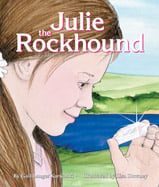Alignment to Standards for TX

| Grade | Number | Standard |
|---|---|---|
| 1 | 112.12 (b) (5) | objects have properties and patterns. |
| 1 | 112.12 (b) (5) (A) | classify objects by observable properties of the materials from which they are made such as larger and smaller, heavier and lighter, shape, color, and texture |
| 1 | 112.12 (b) (7) | the natural world includes rocks, soil, and water that can be observed in cycles, patterns, and systems. |
| 1 | 112.12 (b) (7) (C) | gather evidence of how rocks, soil, and water help to make useful products. |
| 1 | 113.3. (1.6) (B) | identify examples of and uses for natural resources in the community, state, and nation; and |
| 2 | 112.13. (b) (5) (A) | classify matter by physical properties, including shape, relative mass, relative temperature, texture, flexibility, and whether material is a solid or liquid |
| 2 | 112.13. (b) (7) | the natural world includes earth materials. |
| 2 | 112.13. (b) (7) (A) | observe and describe rocks by size, texture, and color |
| 2 | 112.13. (b) (7) (C) | distinguish between natural and manmade resources. |
| 2 | 113.4. (2.7) (B) | people depend on the physical environment, natural resources to satisfy their basic needs. |
| 2 | 113.4. (2.8) (A) | identify ways in which people depend on the physical environment, including natural resources, to meet basic needs; |
| 3 | 112.14. (b) (5) | matter has measurable physical properties and those properties determine how matter is classified, changed, and used. |
| 3 | 112.14. (b) (7) (D) | explore the characteristics of natural resources that make them useful in products and materials such as clothing and furniture and how resources may be conserved. |
| 4 | 112.15. (b) (5) | matter has measurable physical properties and those properties determine how matter is classified, changed, and used. |
| 5 | 112.16. (b) (5) | matter has measurable physical properties and those properties determine how matter is classified, changed, and used. |
| 5 | 112.16. (b) (7) | Earths surface is constantly changing and consists of useful resources. |
| 5 | 112.16. (b) (7) (A) | explore the processes that led to the formation of sedimentary rocks and fossil fuels |
| K | 111.12 (K.8) | uses attributes to determine how objects are alike and different. |
| K | 111.12 (K.8) (A) | is expected to describe and identify an object by its attributes using informal language. |
| K | 111.12 (K.8) (B) | is expected to compare two objects based on their attributes. |
| K | 112.11 (b) (4) (B) | use senses as a tool of observation to identify properties and patterns of organisms, objects, and events in the environment. |
| K | 112.11 (b) (5) | objects have properties and patterns. |
| K | 112.11 (b) (5) (A) | observe and record properties of objects, including relative size and mass, such as bigger or smaller and heavier or lighter, shape, color, and texture |
| K | 112.11 (b) (7) | the natural world includes earth materials. |
| K | 112.11 (b) (7) (A) | observe, describe, compare, and sort rocks by size, shape, color, and texture |
| K | 112.11 (b) (7) (C) | give examples of ways rocks, soil, and water are useful. |
| PK | PK.1. (J) | compares objects and organisms and identifies similarities and differences |
| PK | PK.1. (K) | sorts objects and organisms into groups and begins to describe how groups were organized |
| PK | PK.2. (A) | observes and describes properties of rocks, soil, and water |
| PK | PK.2. (B) | describes properties of objects and characteristics of living things |
| PK | PK.2. (E) | groups organisms and objects as living or nonliving and begins to identify things people have built |
| PK | PK.2. (I) | identifies similarities and differences among objects and organisms |
| PK | PK.5. (A) | matches objects that are alike |
| PK | PK.5. (B) | describes similarities and differences between objects |
| PK | PK.5. (C) | sorts objects into groups by an attribute and begins to explain how the grouping was done |